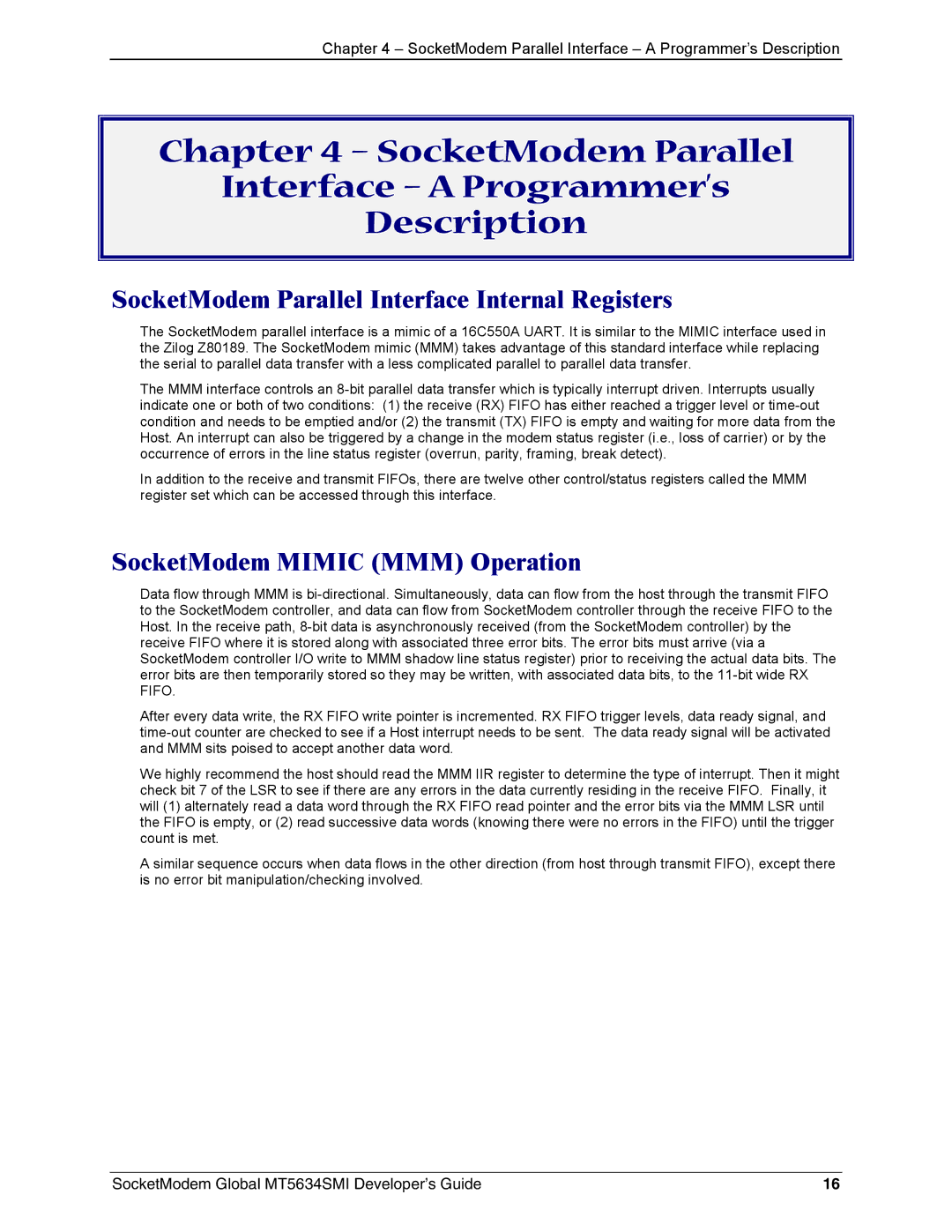
Chapter 4 – SocketModem Parallel Interface – A Programmer’s Description
Chapter 4 – SocketModem Parallel
Interface – A Programmer’s
Description
SocketModem Parallel Interface Internal Registers
The SocketModem parallel interface is a mimic of a 16C550A UART. It is similar to the MIMIC interface used in the Zilog Z80189. The SocketModem mimic (MMM) takes advantage of this standard interface while replacing the serial to parallel data transfer with a less complicated parallel to parallel data transfer.
The MMM interface controls an
In addition to the receive and transmit FIFOs, there are twelve other control/status registers called the MMM register set which can be accessed through this interface.
SocketModem MIMIC (MMM) Operation
Data flow through MMM is
After every data write, the RX FIFO write pointer is incremented. RX FIFO trigger levels, data ready signal, and
We highly recommend the host should read the MMM IIR register to determine the type of interrupt. Then it might check bit 7 of the LSR to see if there are any errors in the data currently residing in the receive FIFO. Finally, it will (1) alternately read a data word through the RX FIFO read pointer and the error bits via the MMM LSR until the FIFO is empty, or (2) read successive data words (knowing there were no errors in the FIFO) until the trigger count is met.
A similar sequence occurs when data flows in the other direction (from host through transmit FIFO), except there is no error bit manipulation/checking involved.
SocketModem Global MT5634SMI Developer’s Guide | 16 |
